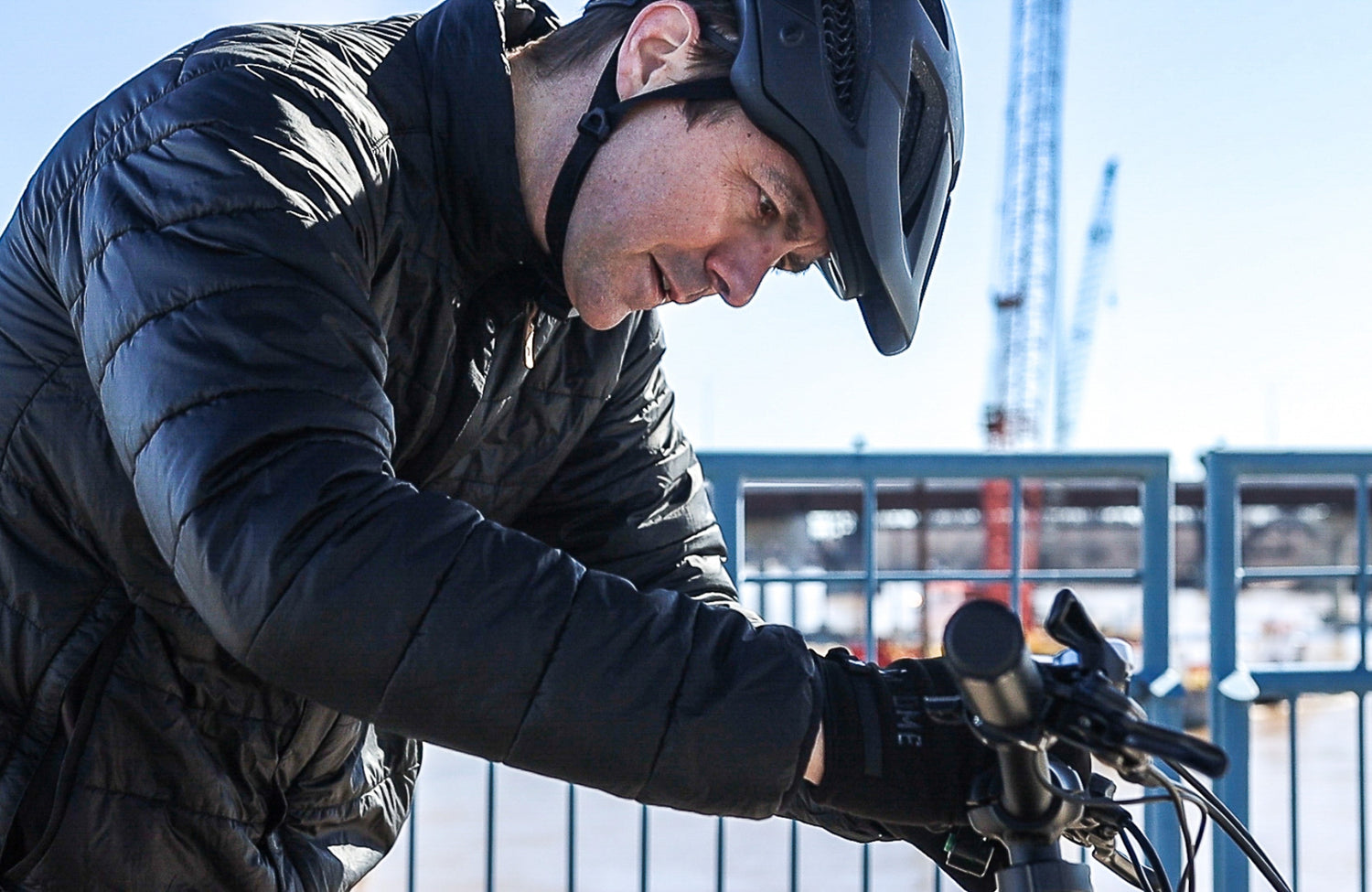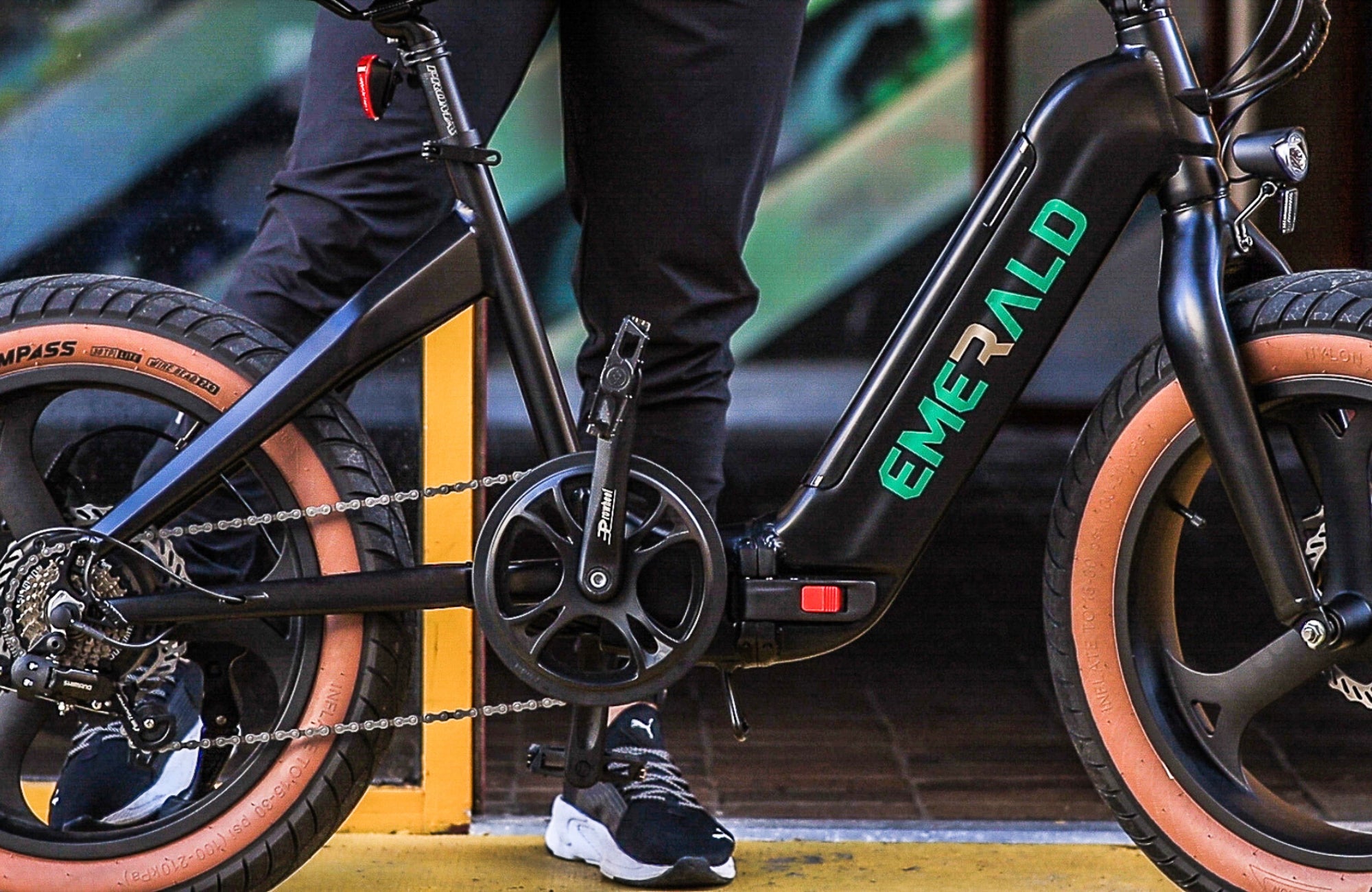Electric bikes (ebikes) are a thrilling alternative to nonelectric bikes, with powerful motors that can help you climb steep hills and fly by fellow riders. They're great for commuting, adventures with friends, and grocery hauls. However, they're not cheap. Then, there's the extra weight and instant power to consider. Before you go full-throttle, it's a good idea to familiarize yourself with your new electric bike. From safety to maintenance to proper mode selection, here's everything you need to know to enjoy the ride and get the most out of your new ebike.
Rider Input
With any bike, you get out what you put in. Most riders pedal with their legs and switch gears to make it harder or easier. Without a motor, it's up to you to propel yourself forward. The only real breaks are the descents.
On an electric bike, you have input from your legs and the motor. This lets you ride faster and longer than on a nonelectric bike. Are you feeling tired? Boost the pedal-assist power to give your legs a break. Learning the right balance is key to maintaining control and making the battery last.
Riding an ebike for the first time? You'll see a digital display screen on the handlebars. It shows important data such as your current pedal assist level, battery charge, and distance traveled. Most bikes have several pedal-assist options. You might see a battery-saving eco mode up to full-pedal assist, which means the motor is doing all the work. Some bikes also have a hill-assist mode. It's handy on big climbs.

Your bike also might have a throttle to reach the top speed quickly. It can be great when the light turns green or you're on a steep hill. Most throttles sit on the handlebars and are easily controlled with your thumb. This instant power boost can also make you feel a little unsteady, especially if you're new to electric bikes. It's important to know how and when to cut the motor to avoid losing control.
Ebike Safety
For everyone's safety, there's a cap on the maximum speed. However, the laws can be murky, and it's up to each state to enforce local regulations. There are three different classes, depending on your bike's speed and power capabilities.
- A Class 1 electric bike cuts out at 20 mph. It's a great choice for running errands around town and casual work commutes.
- Class 2 bikes have the same speed restrictions, but they also have a throttle. The quick boost is ideal for riding with traffic on the road and passing slower riders on the bike path. You get more speed on a Class 3 bike, which tops out at 28 mph.
- Class 3 bikes often have the largest motors but may be too powerful for local bike paths. They're fun for trail rides and off-road adventures.
Rocket-like speed aside, they're also much heavier than most nonelectric bikes and can be harder to control. Consider that the average electric bike weighs around 55 pounds. It can feel very clumsy and awkward, especially for new riders.
A heavier bike can also be harder to transport. For example, can you safely load it onto a bike rack? Is it easy to remove once you've reached your destination? Ebikes also require heavy-duty hitch racks for adequate support. Does your vehicle have a compatible hitch? Can you set up, remove, and transport the electric bike rack?
Read more here about Ebike Safety Tips and Accident Prevention.
Batteries
Few scenarios are more frustrating than having your commute or off-road adventure cut short by a dead battery. If you plan to use your bike for commuting or extended riding adventures, charge it 100% before heading out. Another option is to get a second battery. You can carry it with you and swap it out when the original one runs out of juice. On a full charge, it can extend your range for several more miles.
Want to avoid being caught out with a dead battery? Monitor the current charge level on the digital display screen. Some manufacturers also provide an estimated life cycle. For example, you might find that yours can endure more than 800 full charge cycles without degrading the internal components. This means your original battery can last for years.
Read here for help on How to Choose Your First Ebike.
Ebike Maintenance
There are lots of moving parts on an ebike, some of which will inevitably fail over time. You can extend the battery life and keep your bike in top shape by doing some preventative maintenance. Things like checking your tires and cables for signs of wear and replacing worn brake pads can keep you on the road or trails for longer.

If you ride more often on the road or trails, your maintenance routine will look slightly different. Trails can kick up lots of dirt, dust, and other debris. This debris can take a toll on expensive components and potentially lead to costly repairs. Returning from an epic trail ride? Pay close attention to exposed parts like the drivetrain and rear derailleur. Regularly cleaning the frame and components will keep the bike in top shape.
Theft Prevention
Did you know that a bike is stolen every 30 seconds in the United States? That's about 2 million bikes that go missing each year. Thieves target everyone from commuters to professional ones. Even if your bike isn't in the best shape, it can be a prime target for a sneaky thief.
One reason why bikes are commonly stolen is that cyclists are less likely to report the incident. Bikes can be hard to track down once they go missing, which makes it harder for cops to find your precious ride.
But there's good news. You can take some preventative measures to minimize this risk. One option is to register your bike as soon as you make the purchase. Entering it into the Bike Index can increase the odds that it's found as more eyes in and around your community are alerted to the theft.
Ebikes aren't cheap. Knowing how to protect yours can save lots of money and aggravation. One basic and budget-friendly investment is a heavy-duty lock. It needs to be large enough to fit around a bulky ebike frame. The material should also be resistant to blades and other methods someone might use to cut a lock.








Leave a comment
This site is protected by hCaptcha and the hCaptcha Privacy Policy and Terms of Service apply.